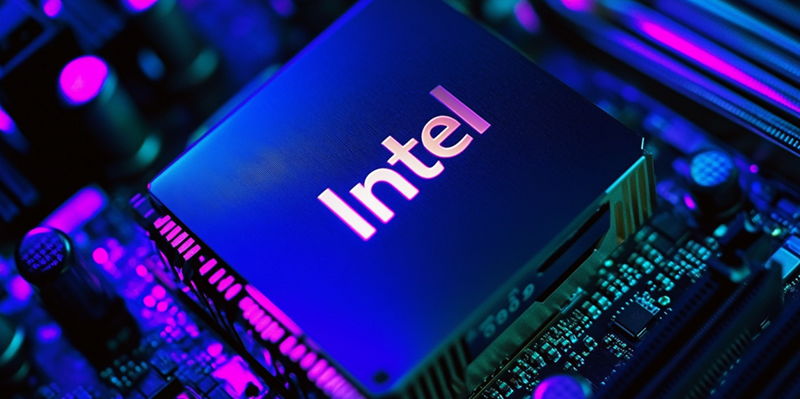Intel is reportedly exploring a groundbreaking shift in their chip architecture by integrating the Integrated Memory Controller (IMC) and Compute Die within Panther Lake into a single package. This move, which aims to mitigate latency issues prominent in their current designs like Arrow Lake, represents a significant stride toward enhancing performance and efficiency. By aiming to minimize data transfer delays often associated with off-die IMC solutions, Intel hopes to make data communication between the IMC and compute unit more efficient and streamlined.
Experimental Integration for Efficiency
Reducing Latency with On-Die Integration
Traditionally, Intel’s System-on-Chip (SoC) design has placed the IMC and compute die on separate tiles. This design strategy, however, has come under scrutiny due to its associated data transfer delays, contributing to overall latency in the system. The proposed integration of these subsystems into a single package within Panther Lake aims to address this very challenge. Leakers kopite7kimi and Jaykihn have indicated that this move is somewhat experimental for Intel, reflecting a strategic bid to reduce latency by making data transfer quicker and more efficient.
The potential elimination of the dedicated SoC tile in Panther Lake promises several advantages. One of the key benefits anticipated from this design overhaul is the streamlined architecture, which could significantly enhance performance by reducing the complexity involved in data routing between separate tiles. Furthermore, this integration is expected to underscore a closer competition with rival technologies like AMD’s Infinity Fabric, which have long been praised for their efficiency and performance in data throughput. By simplifying the architecture and reducing the reliance on interconnects, Intel aims to mitigate one of the critical inefficiencies plaguing their current designs.
A Balancing Act of Scalability and Complexity
A notable consideration in this integration is the balance between scalability and complexity. By merging the IMC and compute die, Intel might achieve a more scalable design that allows easier enhancements without the burden of maintaining multiple subsystems and their interconnections. The consolidation into a single package could also result in improved D2D (die-to-die) communication efficiencies, as data streams within a more cohesive framework. Nonetheless, this approach is characterized as a “hit and trial” method, indicative of Intel’s strategic exploration to identify the most effective solution via practical implementation.
While the advantages are clear, this design approach might be more of a transitional stage rather than a permanent solution. Speculation suggests that with Nova Lake, Intel may revert to their traditional strategy of separating the IMC and compute die, thus indicating a strategy of alternating optimizations to achieve an ideal architecture. This ongoing process reflects Intel’s commitment to refining and perfecting their chip designs to stay competitive in the rapidly evolving landscape of mobile SoCs. The potential to revert indicates a necessity for constant evolution in their technological approach to meet varying demands and performance benchmarks.
Speculative Future and Industry Implications
Balancing Innovation with Performance
Despite the potential benefits of integrating the IMC and compute die, these updates remain speculative and have yet to be officially confirmed by Intel. The performance of Arrow Lake, perceived as underwhelming, has set a precedent of anticipation around Intel’s upcoming architectural changes. Panther Lake’s rumored integration represents a potentially substantial shift in design philosophy, aimed at addressing the shortcomings observed in previous architectures.
If Panther Lake’s design proves successful, it could mark a notable transition towards reduced interconnect dependency, enhancing overall system efficiency. However, the possibility of Intel reimplementing the SoC tile in future designs such as Nova Lake suggests that the innovation seen in Panther Lake might only be a part of a broader, iterative process. This strategy underscores Intel’s methodology of alternating between different design philosophies to achieve optimal performance and keep pace with industry standards.
Ongoing Development and Competitive Edge
Intel is reportedly considering a revolutionary change in their chip architecture by combining the Integrated Memory Controller (IMC) and Compute Die within Panther Lake into a single package. This proposed integration is aimed at addressing and reducing latency issues that currently affect their designs, such as those seen in Arrow Lake. By merging these components, Intel hopes to achieve a major improvement in both performance and efficiency.
Typically, off-die IMC solutions face significant delays in data transfer, which can hinder the overall performance of the chip. Through this new design, Intel is seeking to lessen these delays by creating a more seamless and efficient data communication pathway between the IMC and the compute unit. The new architecture could potentially eliminate the need for certain intermediary steps in data transfer, which are often sources of lag.
This shift could pave the way for next-generation processors that not only deliver higher speeds but also consume less power. Considering the demand for faster and more efficient computing devices, this integration could be a game-changer for Intel, potentially giving them a competitive edge in the market.

